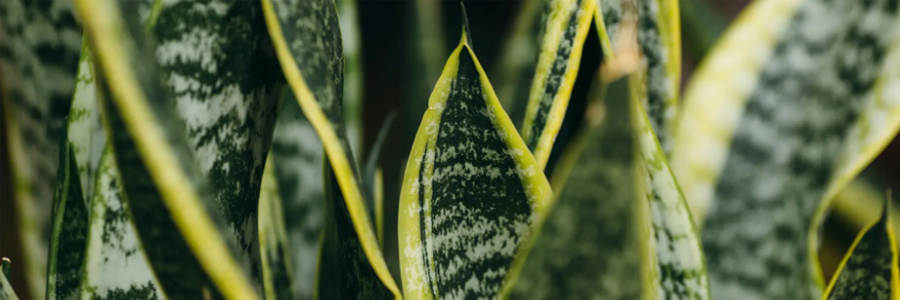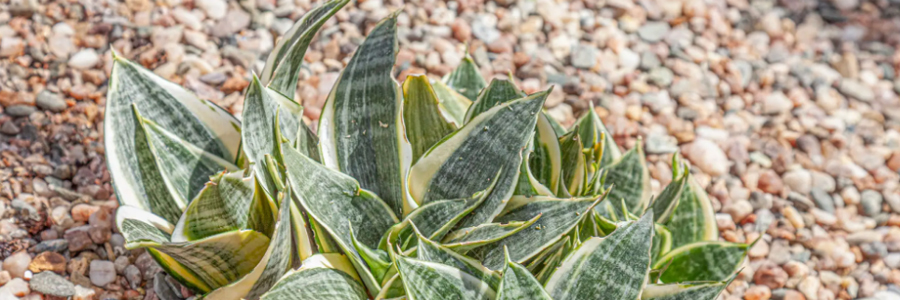Sansevieria
Taxonomic Classification
Sansevieria belongs to the family Asparagaceae. It is a genus of succulent plants with around 70 species. The genus is named after the Italian nobleman Raimondo di Sangro, Prince of Sansevero. Native to Africa, Madagascar, and southern Asia, Sansevieria species have adapted to a variety of habitats, from arid deserts to tropical rainforests.
Morphological Characteristics
1.Leaf Structure
Sansevieria plants are well – known for their distinctive leaf shapes. The leaves are thick, fleshy, and often stiff. They can be long and narrow, like in Sansevieria trifasciata (Snake Plant), which has upright, sword – shaped leaves that can grow up to several feet in height. Some species, such as Sansevieria cylindrica (Cylindrical Snake Plant), have cylindrical leaves. The leaf surfaces may be smooth or have a slightly textured appearance. The leaves are typically green, but many varieties have variegated patterns, such as yellow or white stripes running along the length of the leaf in Sansevieria trifasciata ‘Laurentii’.
2.Stem and Growth Habit
The stems of Sansevieria are usually short and rhizomatous. The rhizomes spread horizontally underground, producing new shoots and leaves. This growth habit allows the plant to form clumps over time. Some species may produce offsets, which are small plantlets that emerge from the base of the mother plant. These offsets can be easily separated and propagated, contributing to the plant’s spread.
3.Flowering Characteristics
When Sansevieria plants flower, they produce tall, spike – like inflorescences. The flowers are small, tubular, and often white or greenish – white. They are arranged in clusters along the flower spike. The flowers may have a sweet, pleasant fragrance, especially at night. However, Sansevieria plants do not flower frequently in cultivation, and the flowering period can vary depending on the species and growing conditions.
Common Varieties
1.Sansevieria trifasciata
Also known as the Snake Plant or Mother – in – Law’s Tongue, Sansevieria trifasciata has long, upright, sword – shaped leaves. The leaves are green with dark green cross – bands, giving them a striped appearance. It is a very popular indoor plant due to its hardiness and ability to tolerate low light. There are also variegated forms, such as Sansevieria trifasciata ‘Laurentii’, which has yellow margins on the leaves.
2.Sansevieria cylindrica
The Cylindrical Snake Plant, Sansevieria cylindrica, has cylindrical leaves that grow upright. The leaves are smooth and green, and they may have a slightly pointed tip. It is a unique – looking plant that can add an interesting element to succulent collections. It can grow up to several feet tall and forms clumps over time.
3.Sansevieria trifasciata ‘Hahnii’
This variety, also known as Bird’s Nest Sansevieria, has shorter, broader leaves that form a rosette – like shape, resembling a bird’s nest. The leaves are green with the characteristic dark green cross – bands. It is a compact plant, making it suitable for small pots or as a tabletop decoration.
4.Sansevieria trifasciata ‘Moonshine’
Sansevieria trifasciata ‘Moonshine’ has light green, almost silvery – gray leaves. The leaves are broader than those of the standard Sansevieria trifasciata and have a more subdued color pattern. It is a visually appealing plant that stands out in indoor and outdoor gardens.
5.Sansevieria masoniana
Commonly called the Whale Fin Sansevieria, Sansevieria masoniana has large, paddle – shaped leaves. The leaves are thick and have a unique, dark green pattern on a lighter green background. It is a slow – growing species but is highly prized for its large, distinctive leaves. It can be a focal point in a succulent collection or a large indoor space.


